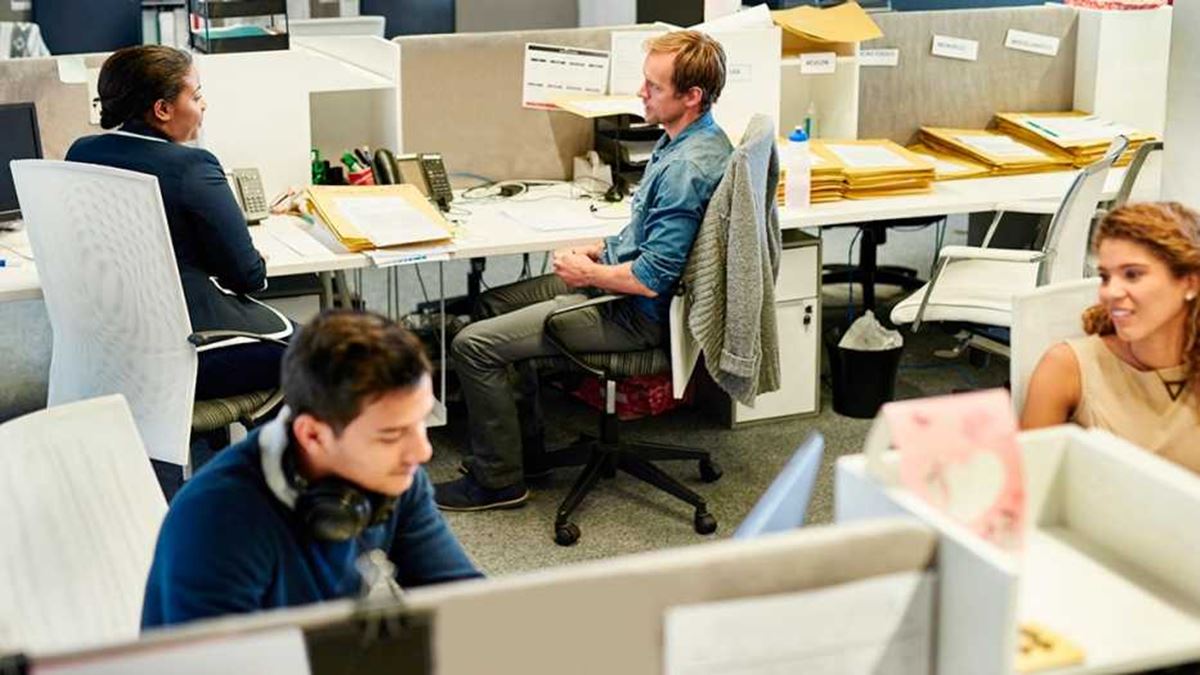The Opportunities and Challenges for White-Collar Returnees
For decades, the allure of the American dream, particularly for skilled professionals, has drawn a significant exodus of Indian talent to the United States. The H-1B visa, in particular, has served as a primary gateway, with over 70% of these coveted visas going to Indians in Fiscal Year 2023 alone. However, a seismic shift is underway. Amidst escalating visa uncertainties, diplomatic scrutiny, and a palpable anti-H-1B sentiment in the U.S., a growing number of highly skilled Indian professionals are now contemplating, or actively pursuing, a return to their homeland. The question on many minds is: Is it a smart move? India, undoubtedly, presents a landscape of rising opportunities in its burgeoning tech, fintech, AI, and startup ecosystems. Yet, this homecoming is not without its complexities, demanding careful consideration of cultural adjustments, potential salary recalibrations, and the navigation of a corporate environment that can feel starkly different from the one they left behind.
Are Many Pushed to Heading Back Home?
The decision to leave a well-established career and life in the U.S. is rarely taken lightly. For many Indian professionals, it’s a culmination of mounting frustrations and uncertainties surrounding the U.S. visa regime, coupled with a growing sense of instability. Not to mention panicked elderly parents who push their children to ‘get out before you are fired’, because ‘being fired is not really accepted in our society’. It is a push that seems hardly logical, but it is a factor worth considering.
Visa Uncertainty is a Sword of Damocles
The H-1B visa, while a pathway to opportunity, has increasingly become a source of immense stress. Under the Trump administration, H-1B denial rates dramatically spiked, soaring to approximately 15-29% from a previous, more stable range of 3-6%. This wasn’t merely a statistical blip; it translated into real-world anxiety for thousands of professionals. Extended processing times, coupled with higher documentation burdens, created a climate of unpredictability where career plans and family futures hung precariously in the balance. The Economic Times has extensively covered these spikes, highlighting the human cost of bureaucratic delays and increased scrutiny.
Diplomatic Scrutiny Just Translates to a Gauntlet of Delays
Beyond the raw denial rates, the operational environment for H-1B holders has become increasingly challenging. Starting April 2025, reports from VisaVerge indicate a significant uptick in various forms of diplomatic scrutiny. This includes increased site visits to employers, a disturbing number of canceled visa interviews (around 2,000 in India alone), secondary screenings that prolong the process, and general embassy delays that add layers of stress to H-1B renewals. For professionals who need to travel internationally, especially for family emergencies or vacations, these delays can be catastrophic, trapping them outside the U.S. for months on end.
The “Too Risky” Re-entry in Case of Travel
Many employees find themselves stranded at immigration lines at airports even though they travel on work. Employers too are afraid of shedding talented employees because of odd, uncertain and ever changing rules. The fear of re-entry is a particularly potent deterrent for many. Reddit forums are rife with anecdotes and warnings from users who describe re-entering the U.S. after an international trip as “too risky.” The threat of 221(g) administrative processing delays (where a visa application is put on hold for further review), outright refusals at the port of entry, or even unexpected visa cancellations, looms large. This makes simple family visits to India a terrifying gamble, forcing many to choose between seeing loved ones and maintaining their professional stability in the U.S. This constant state of anxiety, coupled with the erosion of personal freedoms like international travel, significantly diminishes the appeal of staying in the U.S.
The U.S. Policy Landscape & Anti-H-1B Sentiment
The escalating visa challenges are not isolated incidents but are deeply intertwined with a broader political and ideological current in the U.S.: the rise of anti-H-1B rhetoric and sentiment.
Figures like Steve Bannon and various MAGA conservatives have consistently amplified the narrative that the H-1B program “undercuts U.S. workers” and fuels wage suppression. This rhetoric, often devoid of nuanced economic analysis, paints H-1B visa holders as threats to American jobs, rather than acknowledging their contributions to innovation, tax revenues, and filling critical skill gaps. CyrusMehta.com, a prominent immigration law firm, has documented how this sentiment translates into policy proposals and increased administrative hurdles.
While President Donald Trump has publicly advocated for stricter scrutiny and higher wage floors for H-1B workers, his stance has remained somewhat mixed, promoting a “gradual phase-down” of the program rather than its full abolishment, as reported by India Today. Under the Biden administration, there were some attempts at reform, including rescinding restrictive Trump-era memos and updating specialty-occupation rules (effective January 17, 2025), as noted by NNU Immigration. However, the political pendulum in the U.S. swings unpredictably, and these reforms are now perceived as unstable, vulnerable to potential reversals with future changes in administration or policy priorities. This instability creates a long-term strategic dilemma for Indian professionals: can they truly build a stable future in a country where their immigration status is a perennial political football?
India’s Rising Opportunities Pull Talent Right Back
While the “push” factors from the U.S. are significant, the “pull” factors from India are equally compelling. India’s economic landscape has undergone a remarkable transformation, presenting genuine and exciting opportunities for skilled professionals.
Booming Tech and Startup Ecosystems
India’s tech sector is experiencing unprecedented growth, fueled by a massive domestic market, increasing digital adoption, and a vibrant startup culture. Cities like Bengaluru, Hyderabad, and Pune are global tech hubs, attracting significant venture capital and fostering innovation in areas like SaaS, e-commerce, and digital services.
Fintech and the Ascent of AI
Fintech is a particularly hot sector, driven by India’s UPI (Unified Payments Interface) revolution and rapid financial inclusion. Similarly, the country is making significant strides in Artificial Intelligence, with a growing pool of talent and increasing investment in AI research and development. Returning professionals with global exposure in these fields find themselves highly sought after.
Manufacturing and R&D Expansion
Beyond software, government initiatives like “Make in India” are actively promoting domestic manufacturing and attracting foreign investment. This has led to an expansion of R&D centers for global corporations, who are increasingly looking to India for cost-effective innovation and a skilled workforce. The repatriation of global talent, bringing back international best practices and expertise, further fuels this growth. Forbes India has highlighted how these sectors are becoming increasingly attractive for returnees.
Strategic Takeaways for Returnees or How to Navigate the Homecoming
For white-collar Indians contemplating this significant life and career transition, a strategic approach is paramount. The return is not merely a geographical shift but a complex reintegration into a different professional and cultural ecosystem.
Explore Local Roles Early and Actively
India’s job market, especially in tech and R&D, is dynamic and fast-moving. Begin exploring opportunities, networking, and interviewing well in advance of your planned return. Leverage platforms like LinkedIn, professional networks, and specialized recruitment agencies that cater to returning NRIs. Understanding the local salary benchmarks and career progression paths is crucial to manage expectations. While a direct dollar-to-rupee conversion might seem like a “salary reduction,” the lower cost of living and different tax structures in India can often balance this out, leading to a comparable or even improved quality of life.
Diversify Visa Tracks (If U.S. Re-entry is Essential)
For those who might still need to maintain a U.S. presence or have family members who wish to return later, exploring alternative visa tracks is critical. Options like O-1 visas (for individuals with extraordinary ability), L-1 visas (for intra-company transfers), or other global intrafirm transfer routes can offer more stability than the H-1B. VisaVerge provides valuable resources on these alternative pathways, emphasizing the need for proactive planning.
Plan Renewal/Travel Carefully
Until the U.S. regulatory climate stabilizes (which is a big “if”), avoid international travel that requires U.S. visa stamping. This means postponing vacations to other countries or family visits to India if your H-1B renewal is pending or if you anticipate re-entry issues. The risk of being stuck outside the U.S. for an indefinite period is too high for many.
Document Meticulously
Regardless of your plans, maintaining impeccable documentation is always advisable. Strong job offer proofs, detailed records of your professional contributions, and strict compliance with all immigration regulations will provide a crucial cushion against any future scrutiny, whether you choose to stay in the U.S. or return to India.
Prepare for Cultural and Corporate Adjustments
While India is home, the corporate culture can differ significantly from the U.S. Hierarchies can be more rigid, communication styles might be more indirect, and the pace of decision-making can vary. Returning professionals should mentally prepare for these adjustments, embrace adaptability, and seek out mentors who can guide them through the nuances of the Indian professional landscape.
As Always, the Bottom Line is a Balanced Equation
The “Return to India” phenomenon among white-collar professionals from the U.S. is a multifaceted narrative. On one hand, it presents promising new roles and a chance to contribute directly to India’s burgeoning tech ascent and economic growth. The opportunities in sectors like AI, fintech, and advanced manufacturing are real and rapidly expanding, offering a chance for significant impact and leadership.
On the other hand, returnees must weigh these opportunities against the very real challenges of career continuity risks, potential initial salary adjustments, and the need to adapt to a different corporate culture. However, for many, the increasing unpredictability and volatility of the American visa environment are tipping the scales. Relocating now offers not just a chance to escape visa anxieties but also to gain stability, influence India’s technological future, and reconnect with their roots, making it a strategically sound move for a growing number of skilled professionals. The great Indian homecoming is not just a trend; it’s a testament to a changing global dynamic and the evolving aspirations of a highly talented workforce.

















